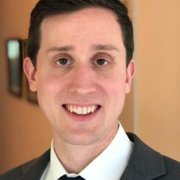On July 18, 2022, much of the UK was suffering through a third day of record-breaking heat. Temperatures soared above 40 degrees Celsius (104 Fahrenheit), straining the nation’s infrastructure.
In London, data centers struggled to keep their servers cool as temperatures rose. Ultimately, several large data centers had to shut down when redundant cooling systems failed. Temperatures had simply exceeded design parameters.
Although these events attracted much attention, London data center operators are hardly alone in contending with unexpected environmental and energy volatility in recent years.
This volatility poses threats to data center operations around the world, and is constraining profitability, uptime, and the placement of new facilities.
In 2021, for instance, the Texas deep freeze caused power outages that led to data center interruptions, impacting services in industries such as healthcare and transportation.
The effects of climate change, geopolitics, and grid constraints on energy systems are growing, disrupting energy prices and capacity, and increasing the frequency and duration of power outages.
At Schneider Electric, we have been tracking these seismic changes in the energy system, and anticipating the volatility that they would precipitate. We’re developing solutions to help our customers build resilience through energy efficiency improvements, diversified energy procurement, and onsite energy solutions.
Three energy volatility challenges
1) Energy cost volatility
Climate change, geopolitics, and supply chain stress combined to create record levels of energy price volatility in 2022, and 2023 offers continued risk. Russia’s invasion of Ukraine triggered dramatic price fluctuations and widespread anxiety about meeting energy demand across Europe.
Thankfully, the continent was graced with a relatively mild winter, and the EU has taken action to accelerate the transition away from Russian fossil fuels. Still, Europe’s energy crisis is unlikely to be resolved any time soon.
Energy cost volatility can make it difficult for data center operators to plan investments, anticipate profitability, and attract capital.
2) Grid constraints
Grid power and transmission capacity is a growing constraint on the placement of data centers, and is further contributing to energy price uncertainty for data center operators.
In Ireland, data centers consume a whopping 17 percent of the nation’s energy – a figure expected to rise to 28 percent by 2030. Generation capacity on the Irish grid has become extremely limited, leading to a de facto moratorium on new data center development. Currently 30 projects are on hold.
Northern Virginia’s electrical grid is experiencing similar challenges as it struggles to meet growing demand. The state was preparing to lift restrictions on running diesel generators so data centers could use backup power systems to relieve grid stress during emergencies. After significant public outcry over potential emissions, the state retracted the proposal in April.
Around the world, competition for electricity and water will continue to limit where data centers can be built and may stoke public opposition to new projects.
3) Increasingly frequent and severe outages
Climate change is challenging grid reliability in multiple ways, including droughts, wildfires, and severe storms. Incidents of sabotage are also on the rise.
Europe suffered widespread and sustained power outages in 2022 from heatwaves and floods. In the United States, power outages caused by severe weather are growing in frequency and duration. Long-term outages like those precipitated by wildfires in California, or recent freezes in Texas, can challenge a data center’s store of diesel fuel.
These same conditions can simultaneously intensify competition for diesel and impede its delivery. Extreme weather can also impact data center energy infrastructure directly, threatening onsite transformers and energy distribution equipment.
Three solutions to address energy volatility
1) Energy efficiency upgrades
Data center operators have various tools at their disposal to shield their budgets from energy price spikes, and their operations from outages. The first step for any data center is to maximize energy efficiency.
Power usage effectiveness (PUE) has driven improvements in efficiency, but over the past five years industry-wide PUE has remained relatively flat.
New innovations are necessary for further gains. Exciting developments are coming in the form of new cooling systems, efficient uninterruptible power supplies (UPSs), and advanced monitoring and control systems for power, building, and IT.
For example, Schneider has found that running a UPS in our patented eConversion mode can save a typical data center hundreds of thousands of dollars over the life of the UPS.
2) Energy procurement diversification
A diverse energy portfolio can help data center operators manage cost volatility, especially with a focus on renewables, which are shielded from fuel cost fluctuations. Expert guidance can optimize the financial performance of an energy portfolio, and Schneider is proud to have recently been named the #1 PPA Marketplace Solutions Provider by Guidehouse.
Strategic investment in offsite renewables can add clean capacity to the grid, which should help to alleviate capacity constraints, and demonstrate to the public that the data center is acting in the community’s interests.
Finally, a diverse energy portfolio focused on renewables reduces the carbon footprint of the data center itself, which in turn helps combat climate change and mitigate future energy volatility
3) Onsite energy resources/microgrids
Increasingly, data center operators are looking to onsite energy resources (both generation and storage) to replace diesel backup generation, to facilitate grid interaction, and as a cleaner solution for prime power. An onsite microgrid can be controlled to optimize cost performance through automated grid interaction.
A data center microgrid can also decrease the load on the grid, helping to relieve congestion and associated public opposition. Importantly, a microgrid built around larger capacity assets like a natural gas generator or a fuel cell may allow a data center to weather longer outages than possible with onsite stores of diesel fuel.
Building data center resiliency
Energy market volatility is likely to continue as the energy system undergoes fundamental restructuring, and the impacts of climate change grow.
Data center operators need to protect their operations from cost fluctuations and outages. At the same time, they must convince host communities and countries that they are part of the solution, and not just competitors for scarce resources.
At Schneider, we believe the threat of energy volatility also presents an opportunity to propel the evolution of a more sustainable, resilient, and profitable data center industry.
Of course, none of us can realize this potential alone. We must come together as partners to develop and adopt the solutions that will prepare us for an uncertain future.
For more information on energy procurement and onsite energy resources, visit our sustainability business page or check out this whitepaper on How microgrids for data centers increase resilience, optimize costs, and improve sustainability.
More from Schneider Electric
-

Sponsored Leveraging DCIM to drive decarbonization
Ramping up decarbonization efforts in the colocation data center through the utilization of DCIM
-

DCD>Talks demystifying Scope 3 with Adam Compton, Schneider Electric
DCD's Dan Loosemore and Schneider's Adam Compton sit down to discuss the approaches to Scope 3 emissions
-

Sponsored The road to net zero: Where do colocation providers stand?
Sustainability study from Forrester and Schneider tells us more


